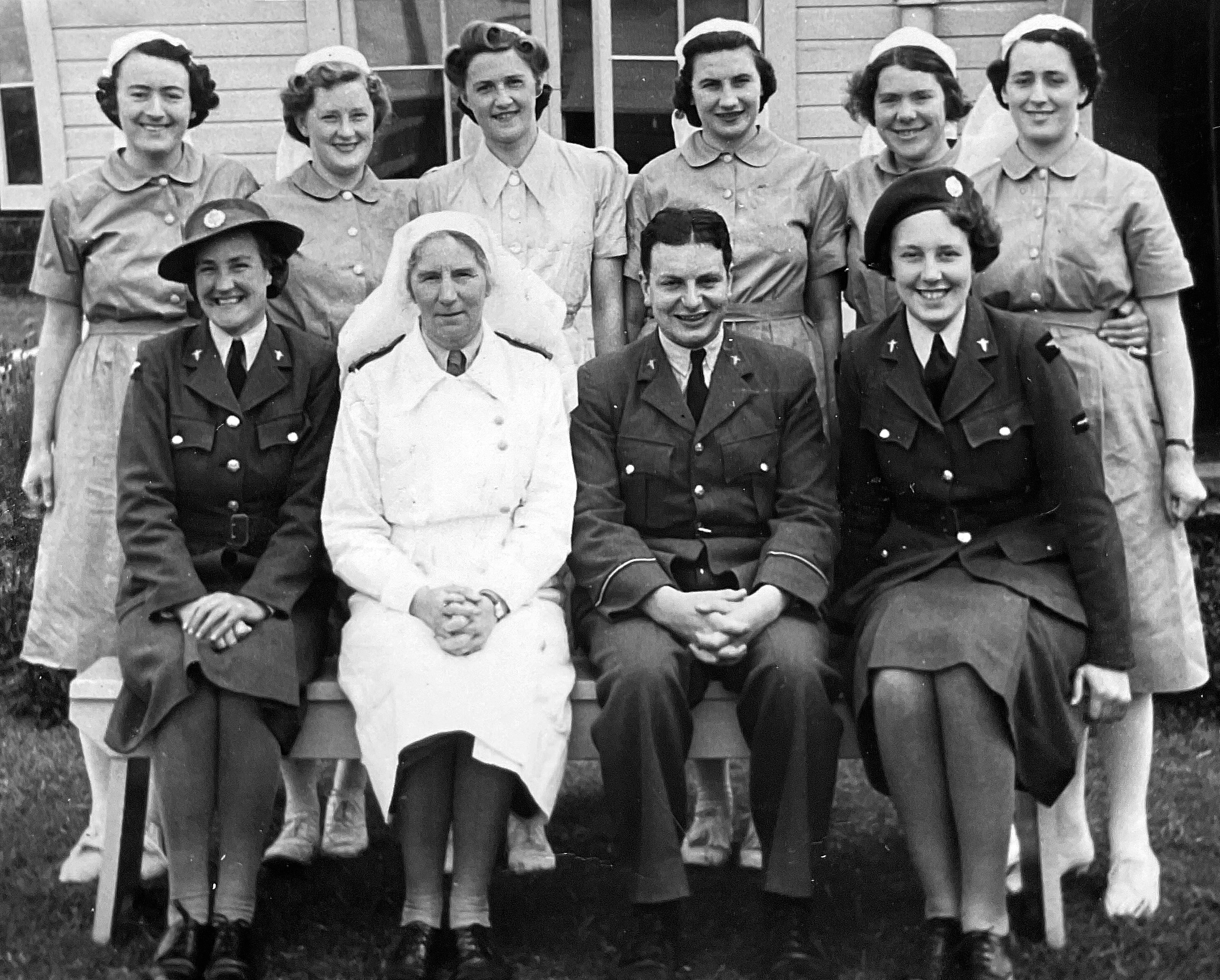|
|
Post by Dave Homewood on May 12, 2021 15:12:46 GMT 12
I just received this photo from Chris Hogan, in which his mother, Cambridge WAAF Betty Maud Hogan (nee Wild) is in the back row, third from left. Till today I did not know Betty's trade in the WAAF, and seeing this photo and another that Chris sent me (which is on her page on my site now here) I now realise she worked in a Station Hospital. In the other photo she is in WAAF uniform with the Caduceus medical badges on her collar lapels as seen on the WAAF's and Doctor in the front row. I am pretty sure that the two people sitting in the centre are a Nursing Sister and an RNZAF Doctor. But were the others, the more junior women, known as Nurses? Or were they Medics in the wartime WAAF? Does anyone recognise any of the other people in the photo? Betty was based at RNZAF Station Seagrove at the beginning of her career but she was in the RNZAF till 18 Jan 1945 so i do not know where she was posted to after Seagrove closed.  |
|
|
|
Post by davidd on May 22, 2021 13:33:26 GMT 12
By virtue of fact that all RNZAF qualified medical officers (doctors) were (naturally) University graduates of doctor status, they never served in any officer rank lower than Flying Officer, which I presume explains the width of the braid on the above gentleman's cuffs. A higher proportion of wartime medical officers served in rank of flight lieutenant, with any in ranks above that serving in higher administrative appointments than simply medical officer. Towards end of WW2, in New Zealand and the Pacific, the RNZAF had on strength 12 flying officers, 41 flight lieutenants, 11 squadron leaders, and one group captain (last head of RNZAF Medical Services), for total of 65.
As to the status of nurses in wartime RNZAF (there were male medical orderlies too, who were definitely NOT of nurse status), I think a quick read of the relevant volumes of the official NZ war histories covering the medical services would be a good point to start. "Proper" nurses in RNZAF were (including matrons), so far as I know, all members of the Army's Nursing Corps (NZ Army Nursing Service) on attachment to the RNZAF to provide for supervision and further training of the female (and male!) orderlies and the like in station sick quarters, and also in the very few RNZAF Hospitals (which were quite small, and few in number). The RNZAF relied mostly on the big American casualty hospitals for medical care where injuries or sickness were severe. There was a special mustering in the NZ WAAF of Clerk (Medical) which included the privilege of wearing the Caduceus on the lapels of the tunics (as shown above, front row, who are most certainly WAAFs, and displaying the optional headware). Five of the young women at rear are in working uniforms (rather than the more formal BG uniforms in front row, except the matron) - may be NZ WAAF medical orderlies (with rounded collars), but one in centre with different working uniform (pointed collar) may be NZANS qualified nurse. Will have to study Barry O'Sullivan's new book on RNZAF Uniforms to 1948, as soon as hard copies appear!
David D
|
|
|
|
Post by bethoust on Nov 25, 2021 6:40:45 GMT 12
To be honest, unfortunately, I don't recognize anyone, and I don't even know who it's talking about, and I'm very sorry. Although I started to be interested in this profession this year and studied it more carefully, I did not look for outstanding personalities or more notable people who have worked in this field in the past. I only took a course that helped me know the basics that you need to know if you want to practice nursing. If you're going to click here you will learn the whole nascent base thanks to them. I will start reading more information about the given person because you aroused my interest in her. |
|